
Le Minh Xuan 3 Industrial Park
- Investor: Saigon VRG Investment Corporation
- Price: $320
- Area: 300 Ha
Ho Chi Minh City (abbreviated as HCMC) or Saigon, is the largest city in Vietnam and a burgeoning metropolis of the near future. It serves as a vital economic and entertainment hub and is one of two significant cultural and educational centers in Vietnam.
Ho Chi Minh City is a centrally governed city of special urban status within Vietnam. Located in the transitional region between the Southeast and Southwest, the city currently comprises 16 districts, 1 city, and 5 districts, covering a total area of 2,095 square kilometers (809 square miles).
According to the preliminary population census results in 2021, the city’s population is 9,166,800 people (accounting for 9.3% of Vietnam’s population), with an average population density of 4,375 people per square kilometer (the highest in the country). However, if you count unregistered residents, the city’s actual population was nearly 14 million in 2018.
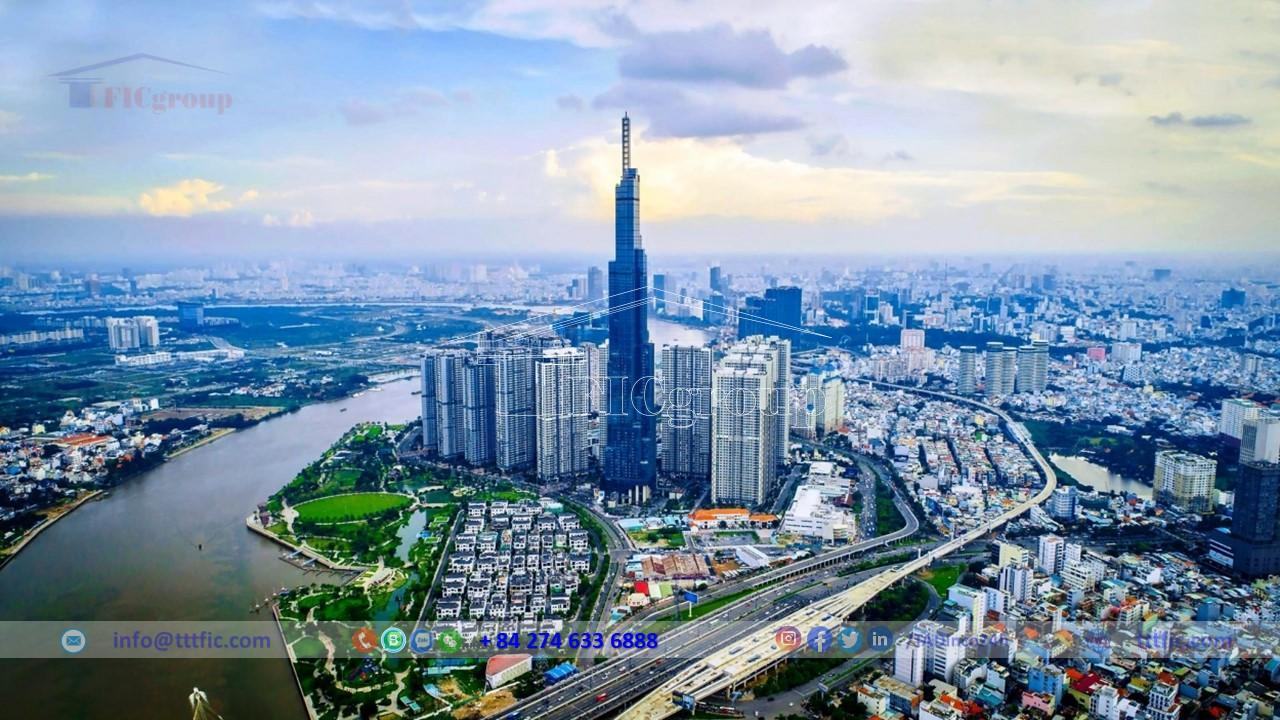
Saigon is situated in the southern part of Vietnam, in the Southeast region. It is approximately 1,730 kilometers (1,074 miles) by road from Hanoi, and its city center is located 50 kilometers (31 miles) from the East Coast by air travel. Being at the focal point of Southeast Asia, Ho Chi Minh City plays a vital role in transportation, connecting provinces in the region and serving as an international gateway to Vietnam through Tan Son Nhat International Airport.
To the north, it borders Binh Duong Province.
To the west, it shares boundaries with Tay Ninh Province and Long An Province.
To the east, it neighbors Dong Nai Province and Ba Ria – Vung Tau Province.
To the south, it meets the South China Sea and Tien Giang Province.
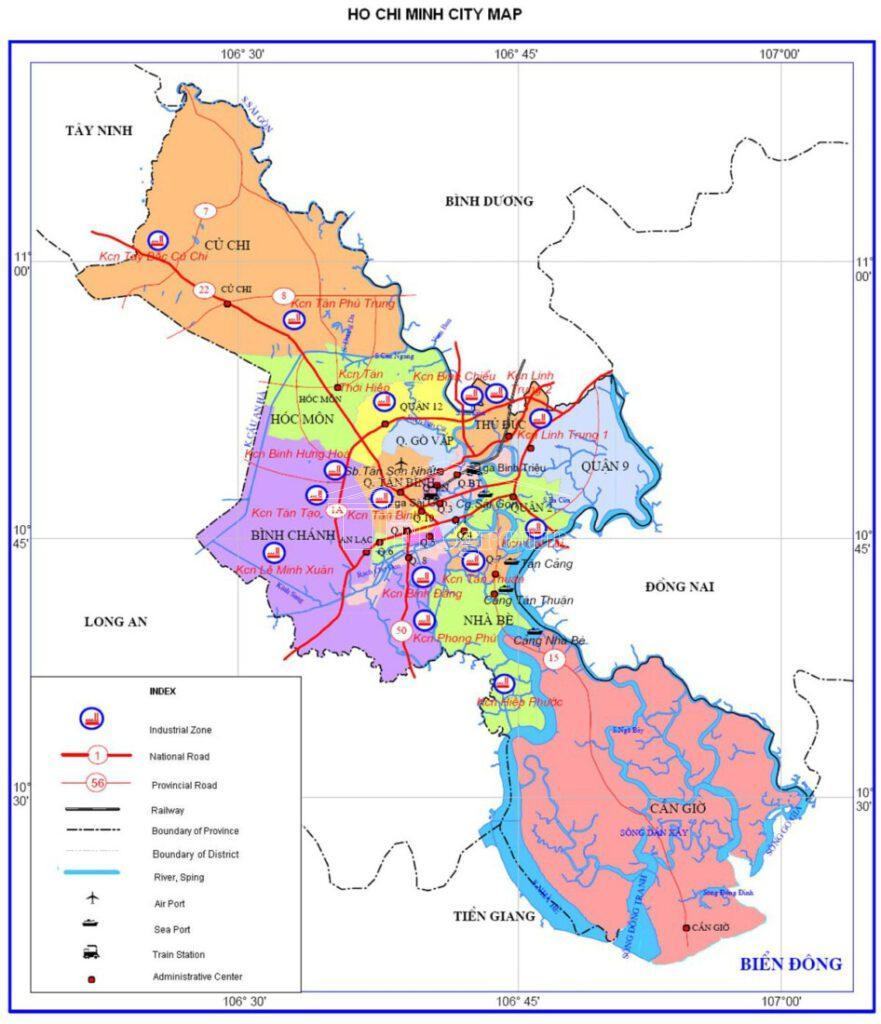
Situated in a tropical monsoon climate zone, like several other provinces in the South, Ho Chi Minh City does not experience distinct seasons like spring, summer, autumn, and winter. It has consistently high temperatures and rainfall throughout the year, with a pronounced wet and dry season.
The rainy season typically spans from May to November (hot and humid weather with frequent rain), while the dry season extends from December to April of the following year (dry climate with high temperatures and less rain). On average, the city enjoys 160 to 270 hours of sunshine per month, with an average temperature of 27°C (80.6°F), reaching a high of up to 40°C (104°F) and a low of 13.8°C (56.8°F). Annually, the city experiences 330 days with an average temperature ranging from 25 to 28°C (77 to 82.4°F).
The average annual rainfall in the city is 1,949 millimeters, with the highest recorded in 1908 at 2,718 millimeters and the lowest in 1958 at 1,392 millimeters. Rainfall is concentrated mainly between May and November, accounting for about 90%, with notable peaks in June and September. Rainfall distribution is uneven across the city, with a tendency to increase from the southwest to the northeast. Inner-city districts and northern districts receive higher rainfall compared to other areas.
Ho Chi Minh City is influenced by two prevailing wind directions: the Southwest Monsoon and the Northeast Monsoon. The Southwest Monsoon originates from the Indian Ocean, with an average wind speed of 3.6 meters per second during the rainy season. The Northeast Monsoon comes from the East Sea, with an average wind speed of 2.4 meters per second during the dry season. Additionally, there is the Southern Monsoon, which blows from the South to the Southeast between March and May, averaging 3.7 meters per second. The city is not typically affected by typhoons. Humidity levels in the city are higher during the rainy season (around 80%) and lower during the dry season (74.5%), with an annual average humidity of 79.5%.
Ho Chi Minh City plays a leading role in Vietnam’s economy. While it covers only 0.6% of the country’s land area and is home to 8.34% of its population, the city contributes significantly to the national economy. It accounts for 20.5% of the total GDP, 27.9% of industrial production value, and 37.9% of foreign investment projects in Vietnam.
In 2005, the city had 2,966,400 laborers aged 15 and above, including 139,000 people working beyond the labor age. By 2011, the labor force aged 15 and above in the city had reached 4,000,900 people.
In the first nine months of 2012, the Gross Regional Domestic Product (GRDP) reached approximately 404,720 billion VND, marking an 8.7% increase. In 2021, the GRDP reached 1,298,791 billion VND (equivalent to 56.47 billion USD), with the service sector accounting for about 63.4%, industry and construction at 22.4%, and agriculture, forestry, and fisheries only at 0.6%. The per capita GRDP in 2021 reached 142.6 million VND (equivalent to 6,173 USD).
The city’s budget revenue in 2012 was estimated at 215,975 billion VND, increasing to 383,703 billion VND by 2021. Domestic revenue in 2021 reached 253,281 billion VND, exceeding the budget estimate by 2%, while revenue from import and export activities reached 116,400 billion VND, surpassing the estimate by 7%.
In terms of economic goals, in 2013, the People’s Committee of Ho Chi Minh City set targets for 29 economic and social indicators. Among them were a per capita income of around 4,000 USD, a projected GDP growth of 9.5-10%, a 13% growth rate in export turnover, and total social investment capital of about 248,500-255,000 billion VND, accounting for 36-37% of GDP.
Ho Chi Minh City’s economy is diverse, encompassing industries such as mining, fisheries, agriculture, processing industries, construction, tourism, finance, and more. The city’s economic structure consists of 33.3% state-owned enterprises, 44.6% non-state-owned enterprises, and the remainder is foreign-invested enterprises. The service sector holds the highest share at 51.1%, while industry and construction account for 47.7%, and agriculture, forestry, and fisheries make up only 1.2%.
The city’s industrial sector is moving toward high-tech industries to improve economic efficiency. As of mid-2006, 3 export processing zones and 12 industrial parks in Ho Chi Minh City had attracted 1,092 investment projects, including 452 foreign-invested projects with a total investment capital of over 1.9 billion USD and 19.5 trillion VND.
Ho Chi Minh City leads Vietnam in terms of foreign direct investment (FDI) with 2,530 FDI projects and a total investment of 16.6 billion USD by the end of 2007. In 2007 alone, the city attracted over 400 projects with nearly 3 billion USD.
In the 2017 Provincial Competitiveness Index (PCI) rankings in Vietnam, Ho Chi Minh City ranked 8th out of 63 provinces and cities.
Regarding commerce, the city boasts a diverse system of shopping centers, supermarkets, and markets. Ben Thanh Market is a symbol of the city’s long-standing trade history and continues to play a significant role. In recent decades, modern shopping centers like Saigon Trade Center and Diamond Plaza have emerged. Ho Chi Minh City’s consumption level is considerably higher than other provinces in Vietnam and is 1.5 times that of the capital, Hanoi.
The Ho Chi Minh City Stock Exchange, with the VN-Index as its trading symbol, was established in July 1998. By December 31, 2007, there were 507 types of securities listed on the entire market, including 138 stocks, with a total capitalization value of 365 trillion VND.
However, the city’s economy faces numerous challenges. Only 10% of the city’s industrial facilities have modern technological capabilities. Among them, 21 out of 212 textile and garment factories, 4 out of 40 leather and footwear factories, 6 out of 68 chemical factories, 14 out of 144 food processing facilities, 18 out of 96 rubber and plastic factories, and 5 out of 46 machinery manufacturing facilities have advanced technology and production capabilities.
The city’s infrastructure is outdated and overburdened, leading to high consumer prices, social issues, and complex administrative processes. Additionally, the city’s budget retention rate has been decreasing, which does not match its economic significance.
In 2021, Ho Chi Minh City experienced an unprecedented GDP contraction of 6.78% due to the COVID-19 pandemic. All components of the GRDP declined, with the service sector being the hardest hit at -54.93%. However, sectors like information and communication, finance, banking, insurance, education, and healthcare recorded positive growth, especially finance with an 8.16% increase.
Following the relaxation of social distancing measures at the end of 2021, the city planned for economic recovery and development in 2022. Within 8 months, the city’s economy nearly fully recovered.
Tan Tao Industrial Parks are prominent industrial zones in Ho Chi Minh City, playing a pivotal role in fostering economic growth and international trade. Here is a comprehensive list of these industrial parks and their names:
These industrial parks play a pivotal role in driving the economic development of the Ho Chi Minh region, providing diverse opportunities for businesses and investors aiming to operate in Vietnam’s burgeoning industrial sector.
Conference on the Master Plan Announcement and Investment Promotion of Ho Chi Minh City.
Due to favorable natural conditions, Ho Chi Minh City has become a crucial transportation hub in Vietnam and Southeast Asia. Unlike Hanoi, water transportation is more significant in Ho Chi Minh City, with maritime transport accounting for approximately 29% and river transport accounting for around 20% of total cargo volume through the city’s ports. Road transport, on the other hand, handles 44% of cargo transportation but serves 85.6% of passenger transport.
In terms of air transportation, Tan Son Nhat International Airport is the largest airport in Vietnam in terms of both area and terminal capacity.
In 2006, the city’s transportation system handled a total of 73,743 tons of cargo, 239 million passengers, and cargo handling of 44,341 tons.
Statistics from mid-2017 indicate that the city had nearly 7.6 million motorbikes (accounting for one-third of the country’s total) and about 700,000 automobiles, while the total population was 13 million.
In recent years, the city’s road infrastructure has undergone significant changes. Currently, the city is connected to various regions through two main highways: the Ho Chi Minh City – Long Thanh – Dau Giay Expressway and the Ho Chi Minh City – Trung Luong Expressway. In addition, National Highways and Gateway Expressways have been significantly expanded, including Nguyen Van Linh Boulevard (South Saigon), Hanoi Highway (towards Bien Hoa), and East-West Boulevard, along with the Thu Thiem Tunnel crossing the Saigon River. The city has also invested in several large bridges to ease traffic congestion and facilitate transportation to the suburbs, such as Phu My Bridge, Saigon 2 Bridge, and Thu Thiem Bridge.
Intra-city traffic, due to rapid population growth, weak urban planning, and a network of narrow roads, has led to chronic congestion. The city has 239 bridges, but many of them have narrower widths compared to road sizes, posing challenges to traffic. Furthermore, a significant portion of these bridges has low load-bearing capacity and is in a deteriorating condition. In suburban districts, the road system is still predominantly unpaved.
The city has two interprovincial bus terminals located at the main entry and exit points: the Eastern Bus Terminal and the Western Bus Terminal, with several auxiliary terminals in District 8, An Suong, and Nga Tu Ga. The network can accommodate over 1,200 buses per day, transporting nearly 41,000 passengers per day to the South Central, Central Highlands, Southeast, and Mekong Delta provinces. Many private bus companies also operate passenger services to unofficial terminals in many urban and suburban areas, close to residential areas and tourist centers. According to 1994 data, the total number of interprovincial passengers passing through the city is approximately 106.4 million people per year, with the majority using National Highway 1.
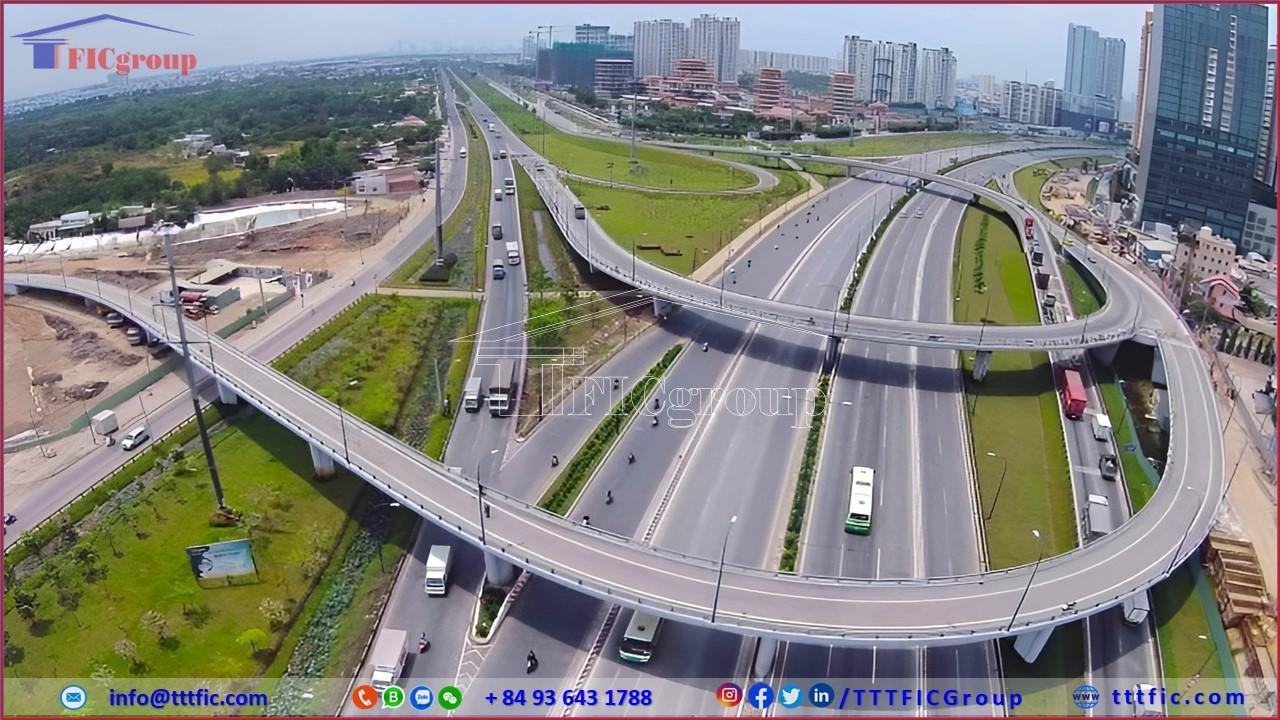
The city’s rail transportation includes urban and suburban lines managed by the Vietnam Railways Corporation’s Third Railway Transport Enterprise. The North-South railway line and several specialized sections of rail have now ceased operations.
There are two main railway stations within the city: Song Than Station and Saigon Railway Station. In addition, there are smaller stations such as Di An, Thu Duc, Binh Trieu, and Go Vap. The disconnected railway network, outdated infrastructure, and the absence of direct connections to ports have hindered the development of rail transportation in Ho Chi Minh City. Currently, rail transportation accounts for about 6% of cargo volume and 0.6% of passenger volume.
The city has an interprovincial waterway route for passenger transport, which is an underground train line connecting Nha Rong Port with Cau Da Port in Vung Tau City. Additionally, there are approximately 50 ferry terminals serving passenger transportation. The largest of these is the Cat Lai Ferry Terminal, which connects Thu Duc City with Nhon Trach District in Dong Nai Province.
Ho Chi Minh City has four major seaports: Saigon Port, Ben Nghe Port, Nha Be Port, and Tan Cang Port, along with several river ports such as Binh Dong Port, Tan Thuan Port, Ton That Thuyet Port, Binh Loi Port, and Binh Phuoc Port.
Saigon Port is one of the largest ports in Vietnam, accounting for 25% of the total cargo throughput of the country’s seaports. Ben Nghe Port, located downstream of the Saigon River, covers an area of 32 hectares and has a total quay length of 528 meters, capable of accommodating ships with a load capacity of 15,000 to 20,000 tons.
Despite the significant capacity of these ports, the transfer of goods between road, sea, and river transport modes faces difficulties. At most river ports, manual loading and unloading are still required due to the lack of appropriate equipment.

Tan Son Nhat International Airport is situated in Tan Binh District, Ho Chi Minh City, only 7 km (4.3 miles) from the city center. It is the busiest airport in Vietnam, with the highest passenger throughput in the country, handling over 41 million passengers in 2019.
Currently, 43 international airlines operate flights to and from this airport. A third terminal is planned to be constructed to increase Tan Son Nhat Airport’s capacity to 45 million passengers per year, with construction expected to commence in the third quarter of 2022.
In the future, when Long Thanh International Airport is completed and operational, it will alleviate the current overcrowding at Tan Son Nhat Airport and handle a significant portion of passenger traffic.
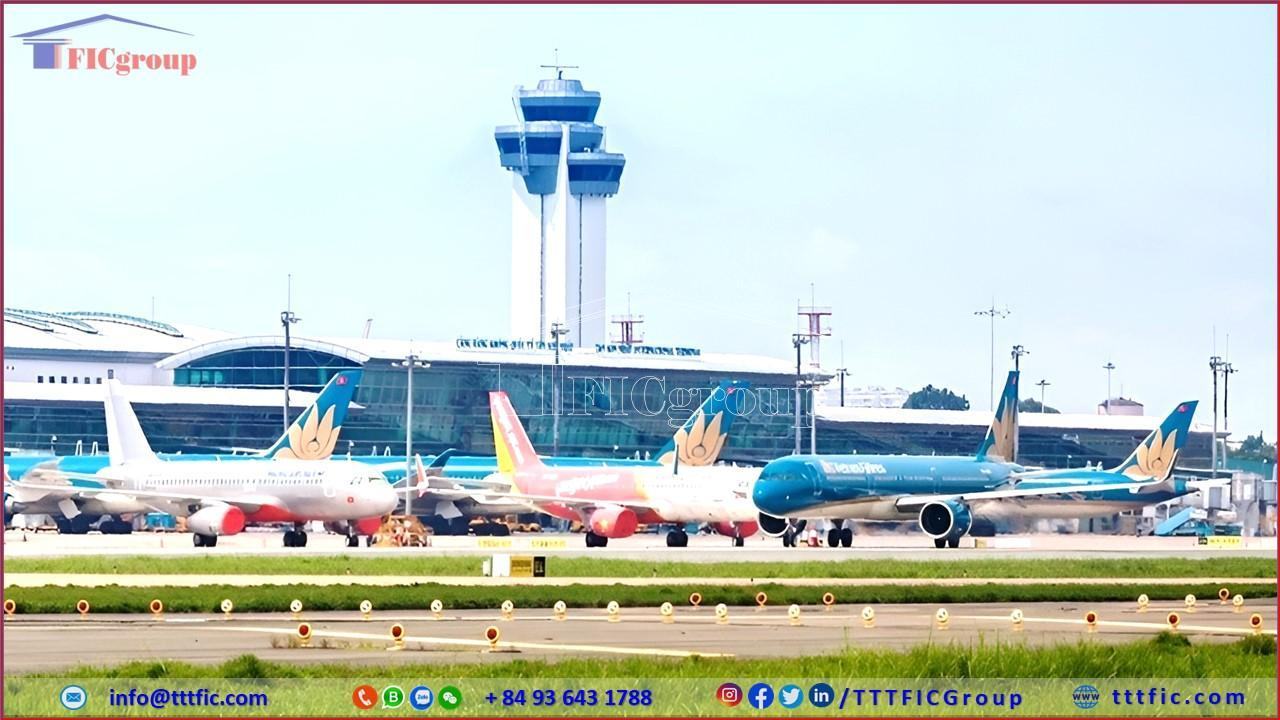
To address urban traffic issues, Ho Chi Minh City is investing in public transportation systems. In 2008, the city had 3,250 buses and 8,000 taxis, which met only about 10% of the transportation demand each year.
The bus system, in particular, has played a dominant role in the city since its revitalization began in 2002. Although physical infrastructure has been upgraded, and subsidies provided on most routes, the network has yet to achieve high efficiency, with 65% of routes overlapping.
In conjunction with the bus network, the Ho Chi Minh City Metro project is also underway. According to the approved plan in 2013, the city will have eight urban railway lines, with a total length of over 160 km.
The first metro line (Line 1: Ben Thanh – Suoi Tien) began construction in March 2007 and is expected to start operating in early 2024, after more than 17 years of construction. This urban railway line has the highest initial investment capital and has seen substantial cost overruns, with initial estimates of 17.387 trillion VND now adjusted to 43.75715 trillion VND, equivalent to approximately 26.4 trillion VND.
Furthermore, the City’s river bus project has been planned and put into operation. Currently, the first river bus route (Bach Dang, District 1 – Linh Dong, Thu Duc City) has been operational since November 25, 2017.
Ho Chi Minh City boasts several notable tourist attractions, including Dam Sen Park, Suoi Tien Park, and the Opera House. Additionally, the city is close to renowned beach destinations like Vung Tau and Can Gio. The city also preserves many historical sites, such as the Independence Palace and the Ho Chi Minh Museum.
Before the COVID-19 pandemic, out of approximately 18 million international visitors to Vietnam in 2019, 8.5 million chose to explore Ho Chi Minh City, accounting for about 47% of the country’s total and marking a 13% increase compared to the same period. Moreover, the city welcomed 33 million domestic tourists. The tourism industry revenue reached 150 trillion VND in 2019, reflecting a 14.5% growth.
Despite its relatively young history of just 300 years, Ho Chi Minh City has constructed numerous architectural landmarks and boasts a diverse cultural heritage.
Currently, Ho Chi Minh City has 2,320 hotels with 48,182 rooms. Catering to upscale visitors, the city has 20 five-star hotels, including Caravelle, Sheraton, Mövenpick (formerly Omni), New World, Equatorial, Lotte Legend, Renaissance Riverside, Windsor Plaza, Sofitel Plaza, Park Hyatt, and Majestic, offering a total of 3,592 rooms. Most of these hotels are managed by international corporations like Accor, Furama, Marriott, or Sheraton and are concentrated primarily in District 1.
Furthermore, the city has 8 four-star hotels with 1,281 rooms and 20 three-star hotels with 1,621 rooms. Due to the booming tourism industry, there is currently a severe shortage of high-end hotel rooms in the city.
Despite the intentions of many investors to build more luxury hotels in Ho Chi Minh City, they have faced challenges in finding suitable locations. It was projected that by 2020, the city would have an additional 10,000 four or five-star hotel rooms.
The city offers a relatively diverse range of tourist destinations, including 11 museums, predominantly focused on historical themes, making Ho Chi Minh City the leader in the number of museums in Vietnam. The largest and oldest museum in the city is the Ho Chi Minh City Museum of History, housing 30,000 artifacts.
While most visitors to the War Remnants Museum are foreigners, the Ho Chi Minh Museum attracts primarily domestic tourists. Ho Chi Minh City is also a religiously diverse urban area, with more than 1,000 temples, shrines, and pagodas built across various historical periods. Additionally, churches mainly in the Roman and Gothic architectural styles appeared primarily in the 19th century. The most prominent and famous church in the city is Notre-Dame Cathedral Basilica of Saigon, completed in 1880 during the colonial period. The colonial era has left several significant architectural landmarks in the city, including the People’s Committee Building, the Municipal Theatre, the Central Post Office, and the Saigon River Port. Independence Palace and the General Sciences Library were constructed during the period of the Republic of Vietnam. Modern architecture has also made its mark on the city with skyscrapers, hotels, and shopping centers such as Diamond Plaza and Saigon Trade Center. Areas outside the city center, including Cu Chi Tunnels, Can Gio Mangrove Forest, and Thu Duc Stork Garden, are also important tourist destinations.
Ho Chi Minh City is also a hub for shopping and entertainment. In addition to music clubs, bars, nightclubs, and theaters, the city features several amusement parks like Dam Sen Park, Suoi Tien Park, and the Saigon Zoo and Botanical Gardens. The city’s shopping districts, including Ben Thanh Market and Diamond Plaza, as well as its numerous restaurants and eateries, contribute significantly to the city’s tourism appeal.
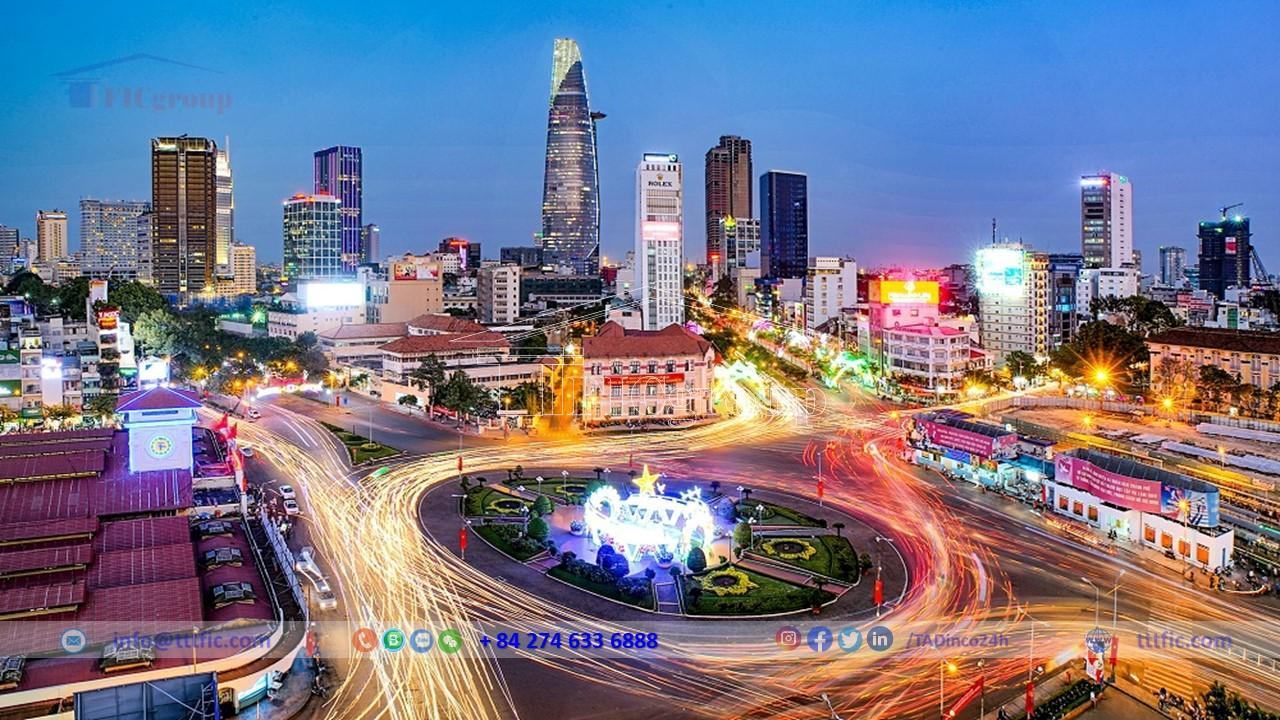
Administratively, the Ho Chi Minh City Department of Education and Training manages educational institutions from preschool to high school levels. Most universities and colleges in the city fall under the jurisdiction of the Vietnamese Ministry of Education and Training.
In the 2008–2009 academic year, the city had 638 preschools, 467 primary schools, 239 lower secondary schools, 81 upper secondary schools, and 55 combined lower and upper secondary schools.
Furthermore, as of 1994, Ho Chi Minh City had 20 literacy centers, 139 computer and foreign language centers, and 12 special education institutions. Among the city’s 1,308 educational institutions, 1,169 are public or semi-public, with the remaining being private institutions.
The city’s educational system encompasses institutions from preschool to high school throughout its urban and suburban areas. Meanwhile, literacy centers and mass education programs primarily focus on the four suburban districts of Cu Chi, Binh Chanh, Nha Be, and Can Gio.
Language schools in Ho Chi Minh City not only teach commonly spoken languages but also offer international language courses. There is also a school that teaches Hán Nôm, and four schools that offer Vietnamese language courses for foreigners. Currently, the city hosts 40 international schools sponsored by consulates and educational companies.
As the largest city in Vietnam, Ho Chi Minh City is also one of the country’s major centers for higher education. The National University of Ho Chi Minh City comprises eight member universities under the government’s authority.
Several other large universities in the city, such as the University of Architecture, the University of Medicine and Pharmacy, the Banking University, the Law University, the University of Economics, the University of Pedagogy, the Open University, and the University of Finance and Marketing, are vital educational institutions in Vietnam.
Among the students attending the city’s universities and colleges, 40% come from other provinces in the country.
In terms of higher education, Ho Chi Minh City has over 80 universities and colleges, with the majority under the administration of the Ministry of Education and Training. Only two public universities, Saigon University and Pham Ngoc Thach University of Medicine, are managed by the city.
Despite significant recent progress, there are still many shortcomings in Ho Chi Minh City’s education system. The overall educational level is not yet high, and there are disparities among different population groups, particularly between suburban and urban areas. The illiteracy rate among ethnic Chinese children is still high, 13 times that of ethnic Kinh children. Education and training have not yet met the needs of society adequately, and the city’s educational infrastructure remains inadequate. Many schools require three shifts to accommodate all students, and teachers’ salaries are not high, especially in suburban districts.
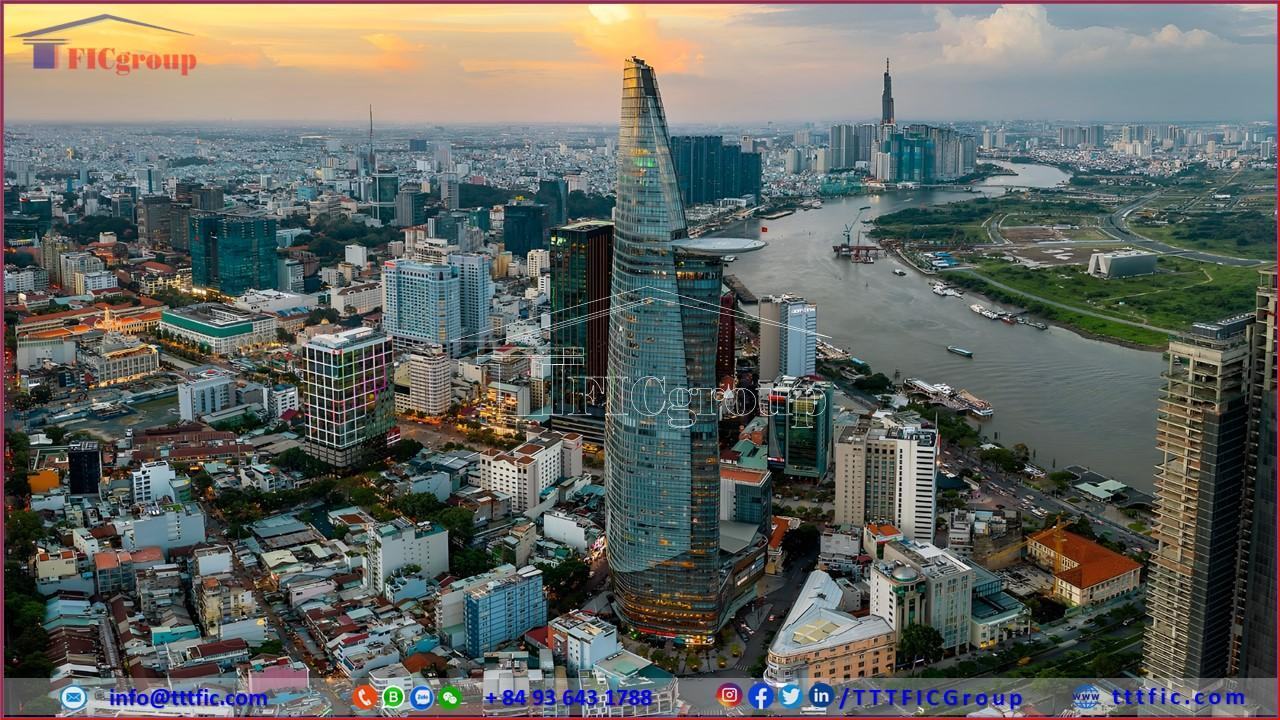
Hub Historical and geographical factors have made Saigon a culturally diverse city. From its inception, the population of Saigon has comprised various ethnic groups, including the Kinh, Hoa, Chăm, and more. During the colonial era and the Vietnam War, Saigon absorbed elements of European and American cultures. In recent decades, economic activities and tourism have further enriched the city’s cultural diversity.
As the cultural center of Vietnam, Ho Chi Minh City currently hosts 22 art units, 9 theaters, 11 museums, 22 cinemas, and 25 libraries. Entertainment activities in Ho Chi Minh City are more vibrant than in any other city in Vietnam. Most of Vietnam’s prominent private film production companies, such as Phuoc Sang, Thien Ngan, HKFilm, and Viet Phim, have their headquarters in Ho Chi Minh City. The city’s cinemas contribute approximately 60–70% of the national box office revenue.
Ho Chi Minh City also boasts a diverse range of theaters. There is the Small Stage Theater in District 3, known for experimental plays, and the Comedy Stage 135 in District 1, offering relaxed performances. IDECAF Theater stages classical and world-renowned plays.
In the music industry, Ho Chi Minh City is the liveliest market and a destination for most famous singers. In addition to major venues like the City Theater, Ben Thanh Theater, Hoa Binh Theater, and Trong Dong Theater, the city’s music scene thrives in various cafes and clubs, including Tieng To Dong, M&T, Catinat, ATB, Bodega, and Carmen.
Ho Chi Minh City remains an attractive destination for international investors. Economic development and a friendly business environment have drawn numerous foreign corporations and companies to invest and expand their operations here. The diversity of industries such as information technology, finance, and manufacturing has created many appealing investment opportunities.
Incentives and Policies Ho Chi Minh City has implemented several investment incentives and policies to attract foreign projects and capital. These policies include tax exemptions and reductions, land ownership rights, and infrastructure support for industrial zones and special economic zones.
Ho Chi Minh City is one of the fastest-growing and most significant cities in Vietnam, characterized by a diverse population, a strong economy, and abundant investment opportunities. It not only boasts a rich history and culture but also serves as an exciting destination for tourists and international investors alike.
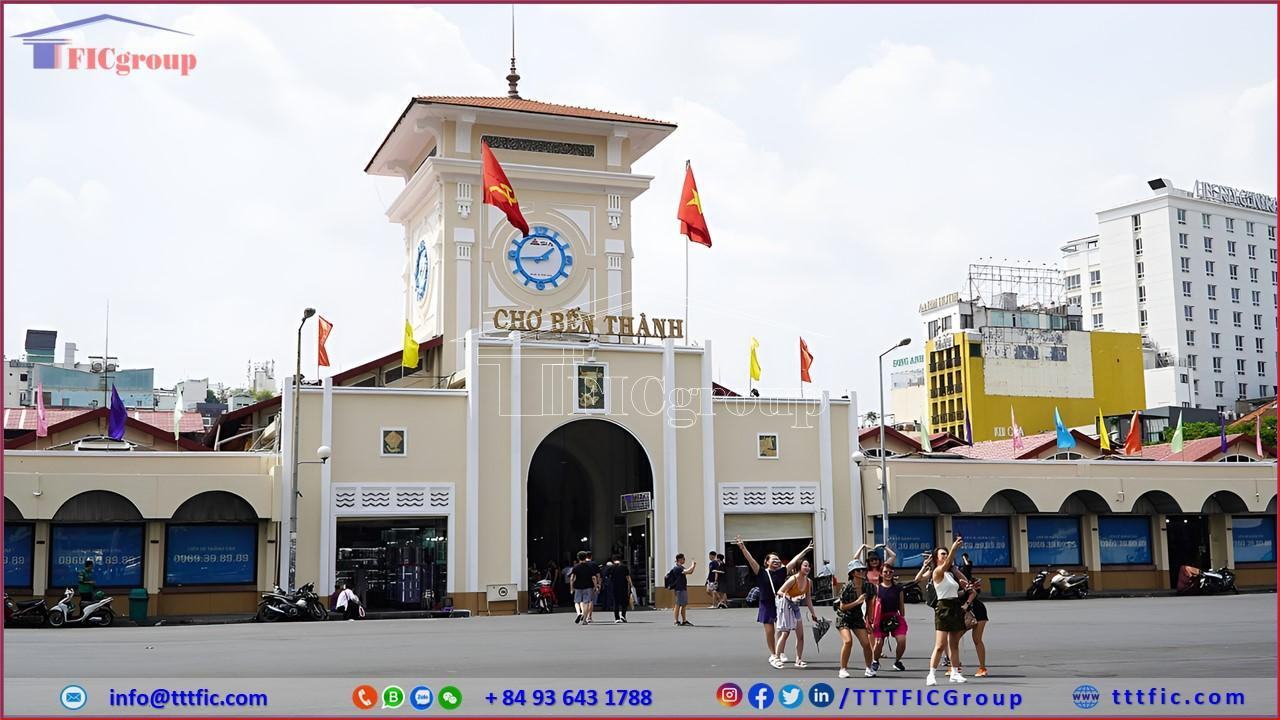
We offer Information and Consultation Services for Industrial Real Estate, including leasing, buying, foreign direct investment (FDI), mergers and acquisitions (M&A), and legal consultancy for foreign investors.
Call us today for the best opportunities to expand your business into Vietnam! We specialize in M&A consultancy for industrial real estate in industrial zones throughout Vietnam.
————————————
Team Marketing
Tel: + 84 274 633 6888
Email: info@tttfic.com
Phone: + 84 93 643 1788
IG/Twitter/LinkedIn/page: /TTTFICGroup
Table of contents








